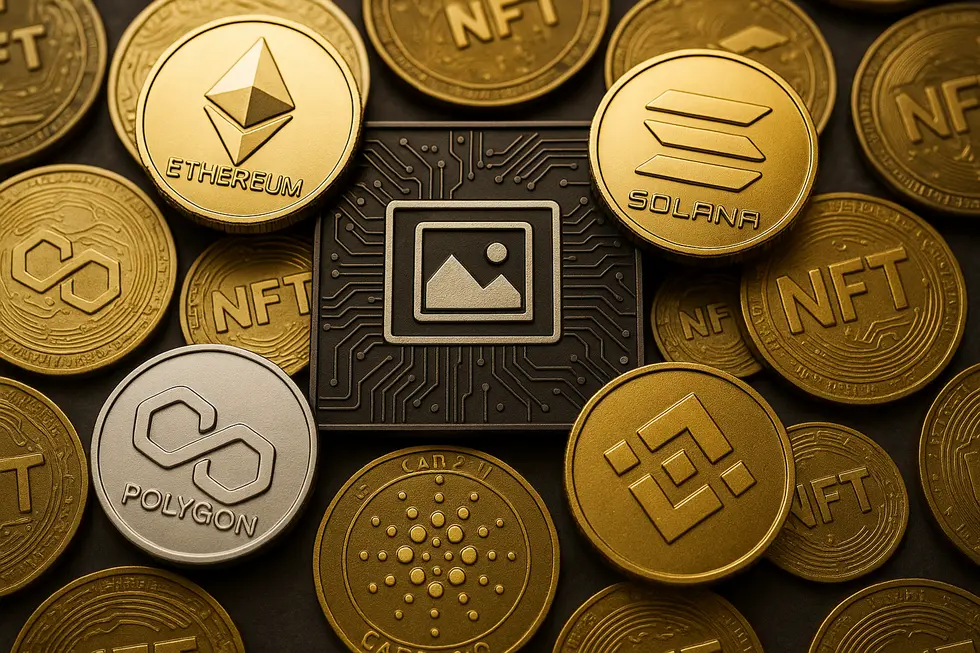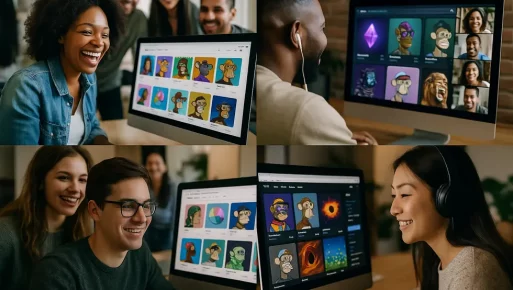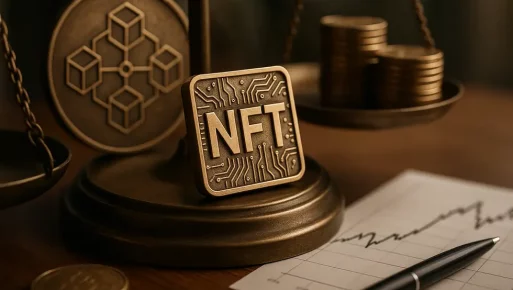As NFTs continue to revolutionize digital ownership and creativity, choosing the right blockchain network for minting becomes crucial. Each network offers unique benefits and challenges. From Ethereum’s unrivaled security and reach to Solana’s impressive speed for digital collectibles, understanding these differences is key for aspiring NFT creators, web3 developers, digital entrepreneurs, crypto investors, and educators. This guide explores the best blockchain networks to mint NFTs, detailing their distinct advantages to help you make informed decisions.
Ethereum: The Premier Blockchain Network for Minting NFTs with Security and Reach
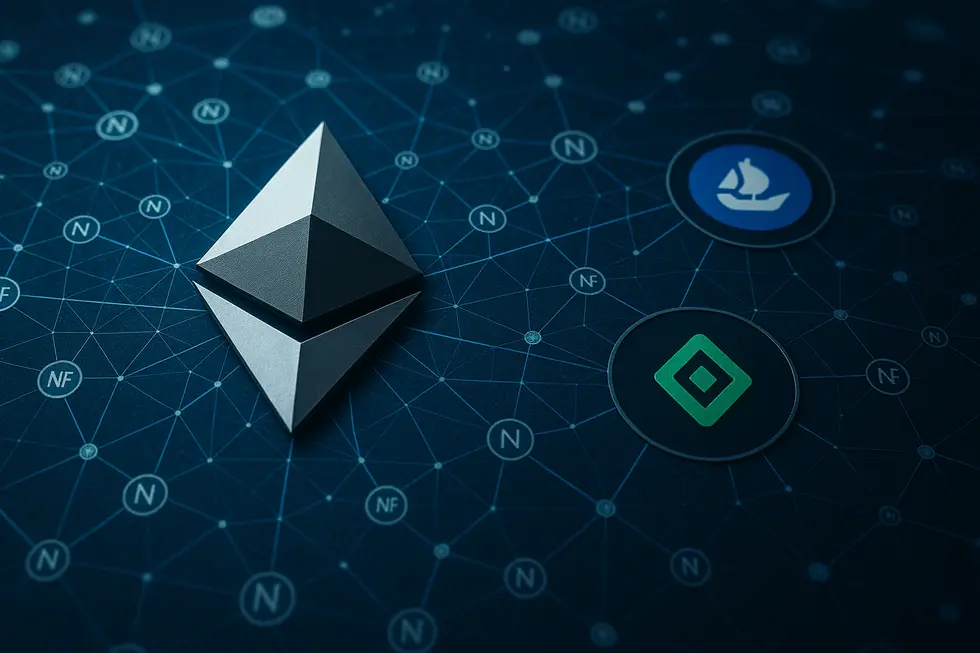
Ethereum stands out as the preeminent choice when considering the best blockchain networks to mint NFTs. Its robust security framework, extensive market reach, and advanced smart contract functionality make it a superior platform for NFT creators. Operating as a decentralized system, Ethereum allows smart contracts and dApps to create unique digital assets in a secure environment.
The minting process on Ethereum involves crafting a digital asset and uploading it to an NFT platform, such as OpenSea, that relies on Ethereum’s blockchain. Here, ownership data is immutably recorded through smart contracts, ensuring transparency by embedding important data like royalties and transfer terms directly within the token.
Ethereum’s popularity offers significant market exposure, enabling creators to connect with a global audience. Established marketplaces, predominantly operating on Ethereum, provide beginner-friendly interfaces to facilitate access. Explore trusted NFT marketplaces to understand how Ethereum dominates this space.
While alternative blockchains, like Solana or Binance Smart Chain, present options, Ethereum’s mature infrastructure and proven security model based on decentralization maintain its pre-eminence. Despite concerns about fluctuating gas fees, solutions like lazy minting and layer-2 optimizations help mitigate these costs, making Ethereum both secure and accessible for NFT issuance.
For an in-depth guide on Ethereum minting, consider resources provided by LiteFinance.
Unveiling Polygon: A Low-Cost, Fast Network for NFTs
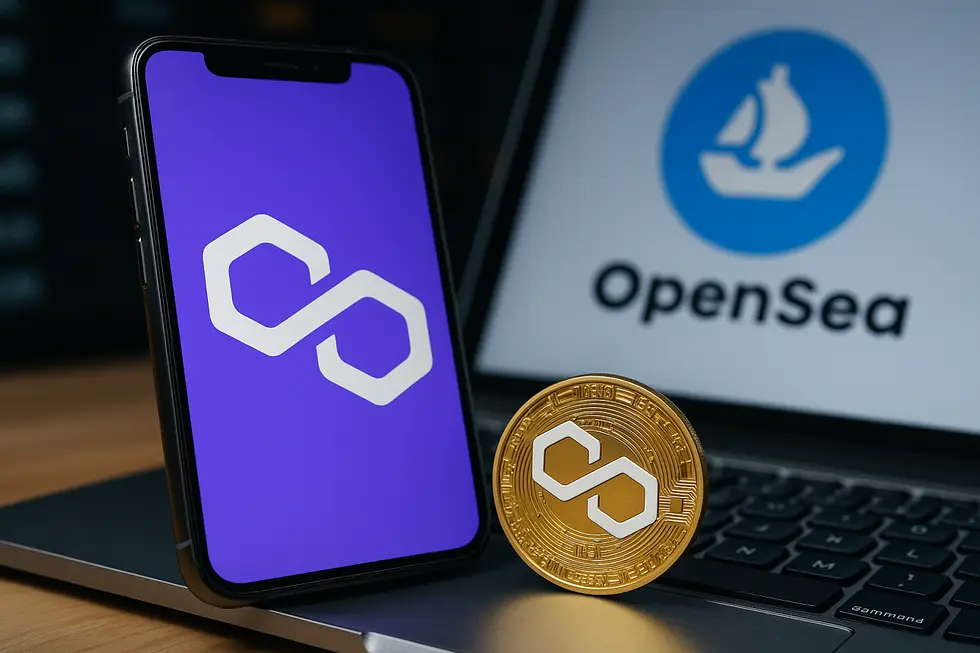
When considering the best blockchain networks to mint NFTs in 2025, Polygon emerges as a formidable contender, thanks to its low transaction costs and rapid processing capabilities. Operating as a Layer 2 solution on Ethereum, Polygon inherits all of Ethereum’s security benefits while offering significant enhancements in terms of scalability and cost-effectiveness.
A primary advantage of choosing Polygon is its low gas fees. Unlike Ethereum, where fees can be prohibitively high and unpredictable due to network congestion, Polygon offers a much more affordable minting process. This financial accessibility is particularly beneficial for artists and collectors who are looking to mint NFTs without hefty costs.
Transaction speed is another area where Polygon shines. By significantly increasing throughput, Polygon facilitates near-instantaneous NFT minting and transfers, ensuring a seamless user experience even during periods of high demand. Its compatibility with the Ethereum Virtual Machine allows developers to deploy existing standards like ERC-721 easily, minimizing integration challenges.
Supported by major NFT marketplaces such as OpenSea, Polygon-based NFTs can also benefit from expanded audience reach and lower transaction fees. For beginners or creators wishing to mint NFTs affordably, platforms offer tools that require no advanced coding knowledge. For more on NFT minting with Polygon, check this QuickNode Guide.
Cardano’s Innovative Path: Revolutionizing NFT Minting on the Best Blockchain Networks
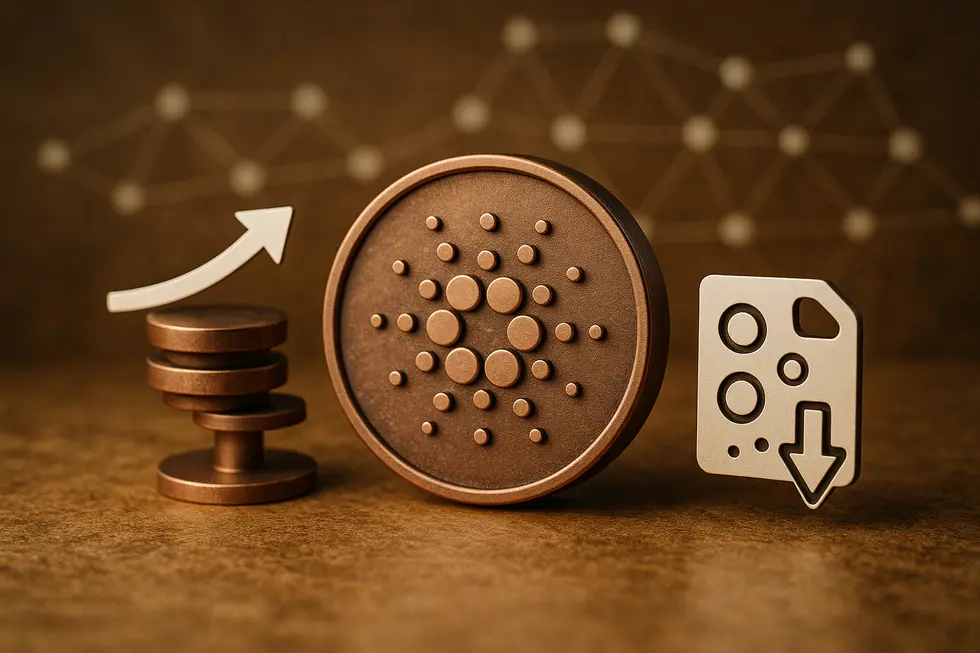
Cardano stands out as a top choice among the best blockchain networks to mint NFTs due to its singular approach to token creation and management. As a third-generation proof-of-stake blockchain, Cardano introduces native token capabilities, which allow direct on-chain NFT creation without the need for smart contracts. This technological edge simplifies the process and reduces associated costs, aligning NFTs closely with Cardano’s ADA currency, enhancing seamless interactions.
The ability to mint NFTs through either third-party services or by self-minting using a Cardano node offers creators unparalleled control. While self-minting demands technical proficiency, it provides complete ownership over the token process. Transaction fees in Cardano’s system, based on file size rather than fluctuating gas prices, result in lower and more predictable costs—an attractive feature for NFT artists and developers aiming for cost efficiency.
Cardano’s extended UTXO (eUTXO) model supports complex, multi-output transactions atomically processed in a single step, increasing both system efficiency and security. The network’s rich ecosystem includes integrated marketplaces and wallets which simplify NFT management and are tailored to capitalize on Cardano’s strengths. Innovative platforms are tapping into this by enabling users to mint NFT identities enhancing interaction within Cardano’s ecosystem.
For a deeper dive into Cardano’s native token framework, check out the Cardano Developer Documentation.
BNB Smart Chain: A Rising Star in the Best Blockchain Networks to Mint NFTs
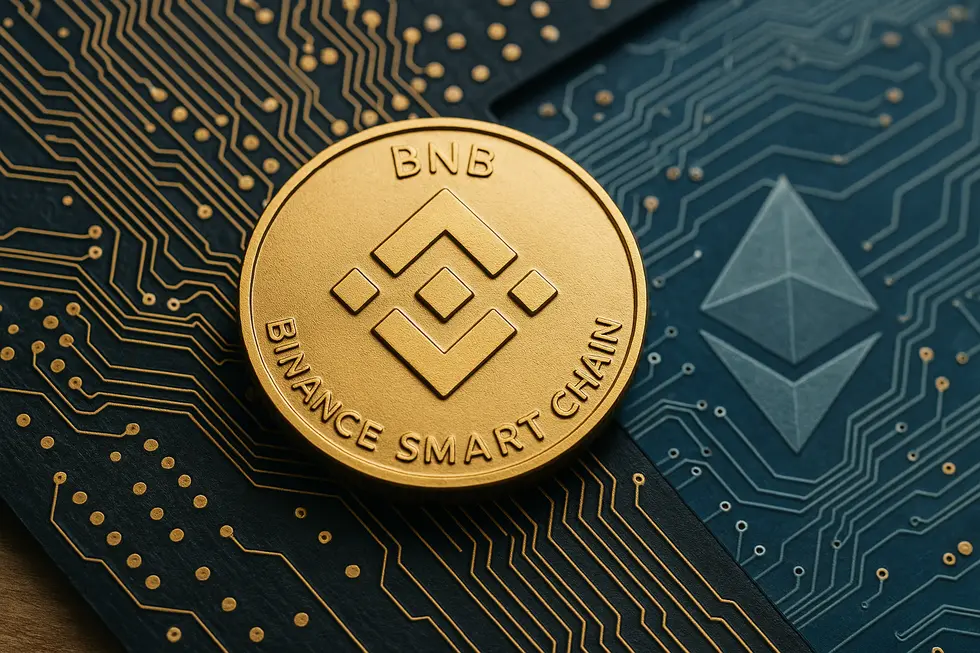
BNB Smart Chain (BSC) emerges as a formidable contender among the best blockchain networks to mint NFTs. Its low minting fees and high transaction speeds position it as a cost-effective alternative to Ethereum, whose fluctuating gas fees often deter creators. Minting on BSC costs roughly 0.005 BNB—mere cents—making it financially attractive for NFT projects.
What distinguishes BSC is its compatibility with the Ethereum Virtual Machine (EVM), allowing seamless integration with Ethereum’s standards like ERC-721 tokens. Developers can easily migrate projects from Ethereum to BSC or build new ones using familiar tools like Solidity for smart contracts. This feature not only reduces developmental complexities but also enhances the network’s appeal to Ethereum-savvy developers.
Moreover, BSC’s cross-chain capabilities foster greater liquidity and user engagement by facilitating interoperability with other blockchains. This flexibility is particularly beneficial for creators who wish to maximize the reach and trading potential of their NFTs. The Binance NFT Marketplace, a pillar of BSC’s ecosystem, offers low-cost minting options and a user-friendly interface that attracts a broad audience of creators and collectors.
The success of large-scale projects like Binance Punks underscores the network’s capacity and reliability, making BSC a go-to choice for NFT minting among developers. For a deeper dive into the dynamics of NFT development on various blockchains, explore this Cointelegraph article on blockchains for NFT development.
Harnessing Solana for Fast-Paced Digital Collectibles: The Best Blockchain Network to Mint NFTs
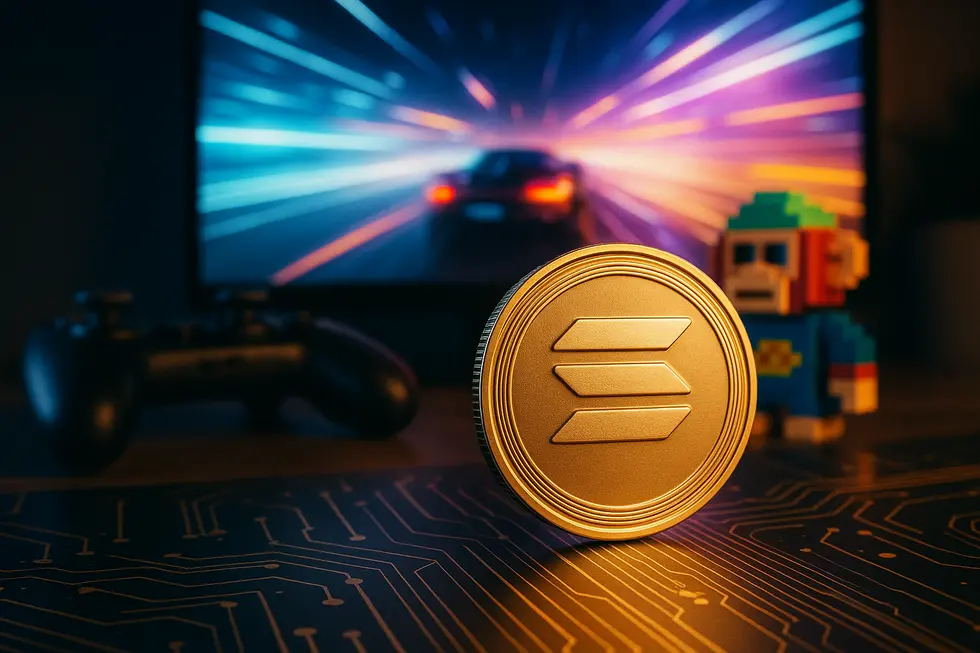
Solana stands out as one of the best blockchain networks to mint NFTs, particularly for creators focused on fast-paced digital collectibles. Its impressive ability to process approximately 65,000 transactions per second (TPS), coupled with an average confirmation time of 400 milliseconds, makes Solana exceptionally efficient compared to Ethereum’s 15 TPS. This exceptional speed is due to Solana’s innovative architecture, including parallel transaction execution known as Sealevel and a fast consensus mechanism combining Tower BFT with Proof of History. This architecture minimizes network congestion, facilitating rapid NFT minting and trading.
The cost advantages are equally compelling, with Solana’s typical transaction fees standing at a mere $0.0025 per transaction. This is a fraction of Ethereum’s often volatile gas fees, making Solana a cost-effective option for both creators and collectors. The network’s commitment to scalability is evident, with ongoing improvements aimed at boosting throughput, further enhancing NFT and decentralized exchange operations.
These attributes—high speed, low costs, and continual upgrades—establish Solana as an ideal choice for creators in the realm of digital collectibles, where swift transactions are paramount. For creators venturing into NFTs with a focus on dynamic, high-speed trading environments, Solana offers an unparalleled advantage. For more insights on NFT minting, check out the Solana Foundation’s NFT launch guides.
Final thoughts
Navigating the various blockchain networks for NFT minting boils down to understanding which network aligns best with your goals. Whether you prioritize Ethereum’s security, Polygon’s affordability, Cardano’s innovation, BNB Smart Chain’s compatibility, or Solana’s speed, each offers unique strengths. Empower your NFT journey by leveraging these insights to select the optimal blockchain network. Your engagement with these networks can catalyze your success as a creator, developer, investor, or educator in the NFT space.
About us
Monbase Global is a strategic partner of OpenLive Group, focused on expanding the reach and utility of blockchain and digital asset applications across international markets. As a core collaborator in the Monbase NFT ecosystem, Monbase Global plays a vital role in driving cross-border partnerships, investment strategies, and user adoption beyond Vietnam. With a vision to build a decentralized digital economy rooted in trust and innovation, Monbase Global supports the international growth of NFTs, digital collectibles, and the use of the MBC token across various platforms. The partnership between Monbase Global and OpenLive Group brings together local insight and global ambition—creating real-world value for creators, collectors, and businesses alike.
🌐 Join the Monbase NFT community and stay ahead of the Web3 curve.
💬 Follow us on Telegram, Twitter, or Discord for drops and updates!
Facebook | X (formerly Twitter) | Telegram announcement | Telegram community


